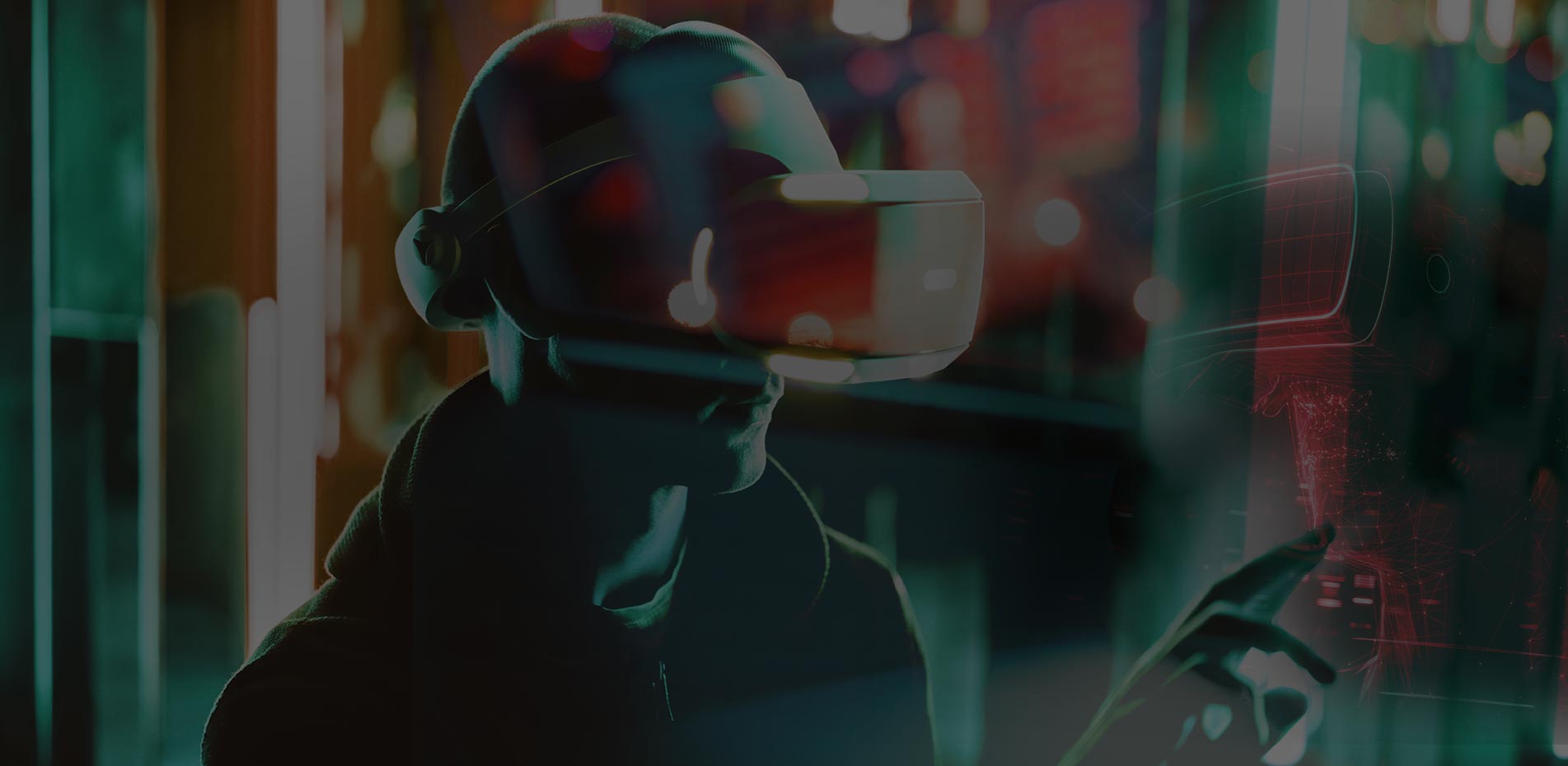
special
The present and future of VR
that blurs
the boundary between
reality and imagination
Virtual Reality
-
Tangible media that
enable communication with
a whole new world -
VR (virtual reality) technology allows us to simulate interactions with our surroundings without directly experiencing the conditions that we generally experience in daily life. VR is widely used in diverse applications, such as 1) entertainment (games, movies, theme parks), 2) the service industry (advertisement, distribution/shopping, tourism, healthcare), 3) simulations for education and media, and other sectors including – but not limited to – 4) the automotive, manufacturing, real estate and construction industries.
Gartner, the renowned IT research firm, selected the so-called “Immersive Experience” as one of the top 10 strategic technologies of 2019. Clearly they realized that VR will be able to provide experiences that come very close to reality beyond the restrictions of time and space, while enabling communication with a new world, through technologies such as AR (Augmented Reality) and MR (Mixed Reality) that will provide a totally new level of experience in the virtual world. As mentioned above, VR technology simulates interactions with a previously unimaginable, inaccessible or rare environment without having to actually be in it. It looks similar to the reality created by artificial technologies such as computers, but it differs from reality and implies a specific environment, condition or the technology itself.
The resulting virtual environment or circumstance stimulates all five senses of humans, including vision, and allows the user to move freely between the reality and the imagination through temporal and spatial experiences that are very similar to the reality. As VR system boosts the reality of events in the virtual environment by detecting the changes of viewpoint or movements of the user, it was used to be applied in training medical professionals in surgery or the operators of tanks and aircraft. There are also mobile VR devices in the form of HMDs (head mounted display) that link the wearer with a gaming console, smart device or high performance PC to enjoy the content.
Many recent games have been developed using computer graphics (CG) from the first- person perspective so that VR can be applied directly. For example, when you turn your head while wearing an HMD VR device, the movement occurs directly in the game, maximizing the sense of immersion. As such, VR will provide great benefits for games such as FPS (First-Person Shooting) or adventure and horror games.
-

VR
(Virtual Reality)
Advanced technology that provides true-to-life
experiences in the virtual world created by a
computer.
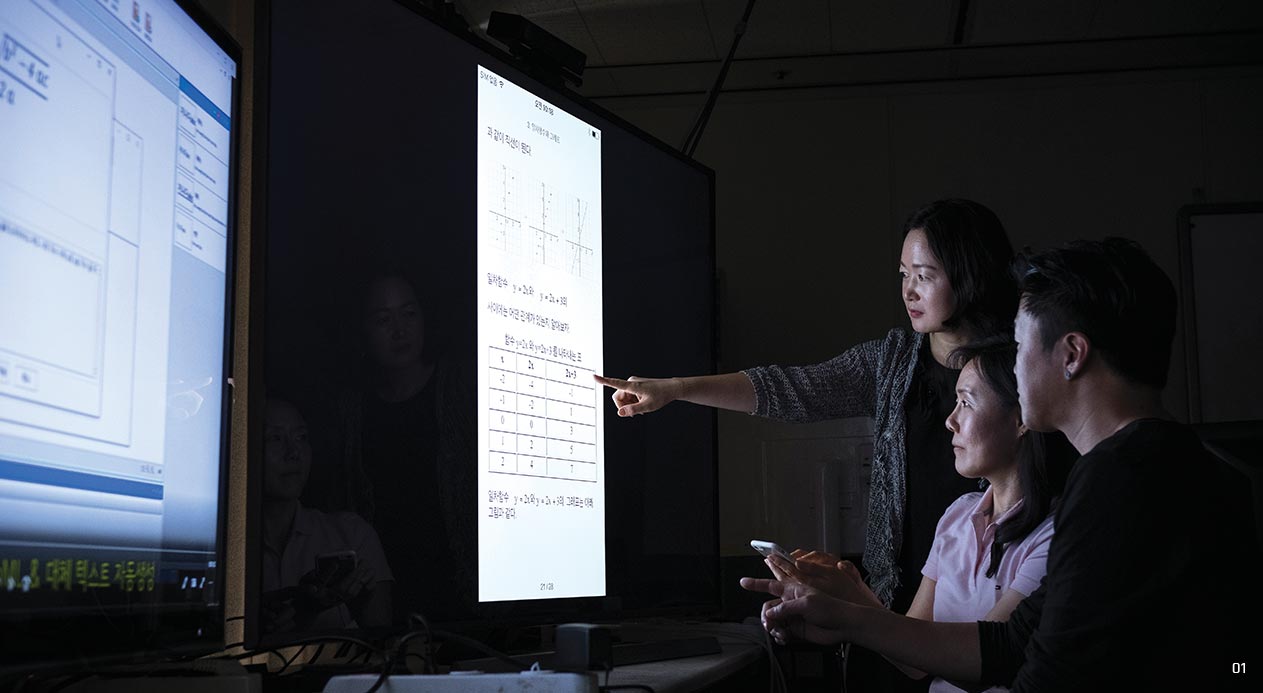
-
01
In the footsteps of development of the e-book
reader for the blind, the researchers of ETRI
started development of content to assist people
with development disorders with job-seeking and
provide on-the-job training of using VR/AR content.
-
VR’s
contribution to
a better life -
VR is expected to contribute not only to advancing industry but also to enhancing the social participation rights of disadvantaged social groups. Last April ETRI started working on the development of technologies designed to help the training and job-seeking efforts of people with developmental disorders by utilizing ICT contents based on AR and VR. ETRI signed an MOU with the Korea Employment Agency for Persons with Disabilities at the Daejon Training Center for People with Developmental Disabilities. It plans to install the “Living Lab”, an open laboratory, at the center in order to demonstrate developed technologies there.
Developmental disorders include conditions of slow physical or psychological development, or difficulties with overall cognitive abilities, such as social behaviour, and not just linguistic, sensory or physical activities. Trainees can qualify for jobs in diverse fields requiring repetitive and simple activities through ICT-based systematic training. ETRI aims to develop contents and technologies to help the disabled with their job-seeking and economic activities by utilizing the experience it has accumulated in ICT and UI/UX technologies. It plans to utilize VR/AR contents in automatic assessments of job performance, while applying the trainees' experiences to the current content for further development. In addition, the institute will develop “tailored virtual experience content” that reflects the cognition, senses, behaviors and characteristics of each individual in order to provide the optimal training program. It is expected to improve the results of job-seeking efforts as well as on-the-job performance and to enhance the trainees' quality of life by giving them economic independence.
-

UX
(User eXperience)
User experiences including overall feelings and
sensations from (in)direct access to a system,
product or service.
-
ETRI's Super Real Virtual Training System.
-
Furthermore, ETRI recently unveiled the “Super Real Virtual Training System”, which enables the user to interact in real time with the virtual environment while firing a weapon and executing other actions. By utilizing separate software for training, a soldier can use the system's treadmill-type mobile interface, which is capable of 360-degree movement. The trainee can run as fast as 10km/h, and the system provides vivid experiences such as shooting a machine gun, throwing a grenade, or even using a bayonet for combat at close quarters by recognizing the actions of the trainee. Meanwhile, the “Depth” camera surrounding the system detects the movements of the user. More specifically, it precisely detects the joints of the user through motion sensors and projects the user's movements on the 360-degree display surrounding the user. Unlike other VR systems, however, this technology does not require the user to wear an HMD, thus enabling the user to move more freely. As such, it can be used not just as a virtual strategic training system for the military, but also in such diverse fields as next-generation games, extreme sports, and rehabilitation systems for the healthcare industry.
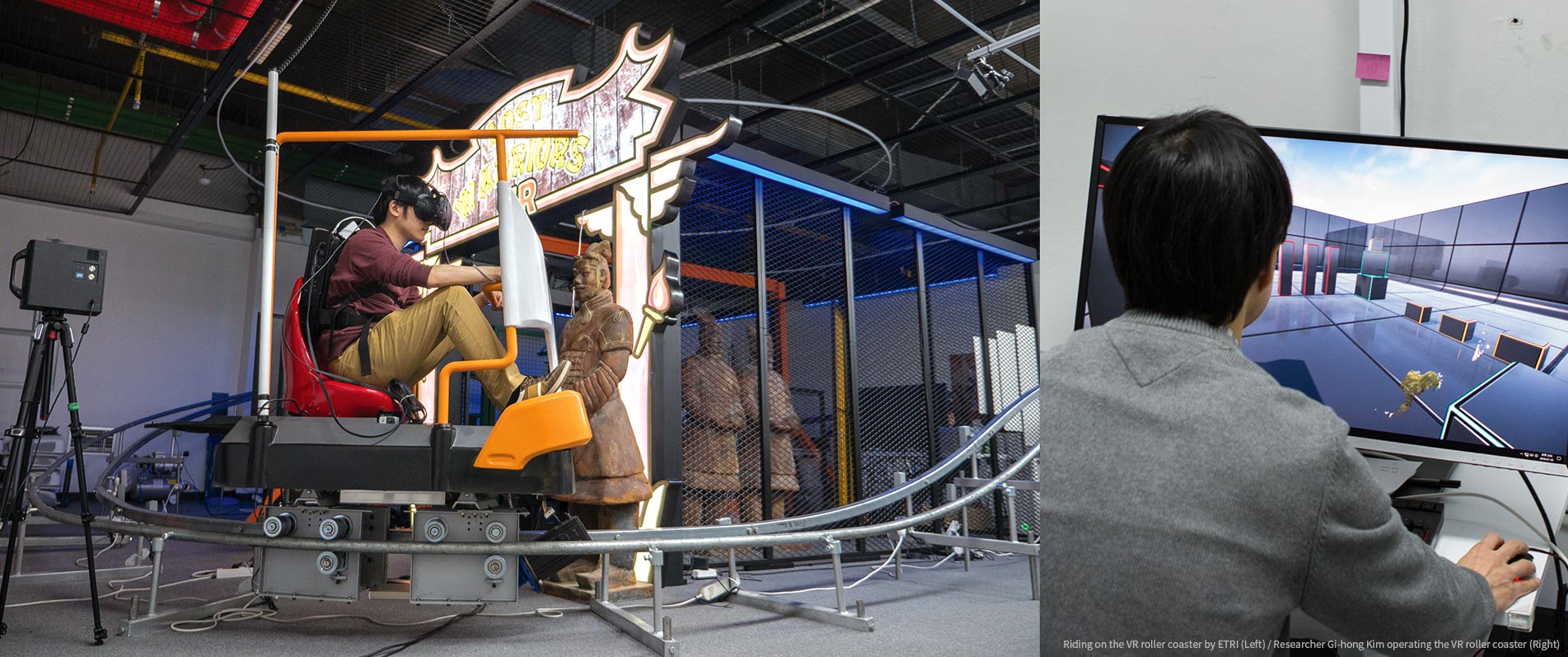
-
VR’s integration
with diverse industries -
VR can be used for many different purposes, such as boosting a person's sense of immersion in a theme park ride or building a totally new type of theme park. In Australia there is a VR center (Zero Latency) where visitors can play VR games. In Texas, USA, the Six Flags Theme Park has introduced a VR roller coaster ride called “The New Revolution” which runs on rails like other roller coasters, but whose riders wear Samsung's VR gear to enjoy the thrills of a 360-degree video experience. At the Virtual Entertainment Center in Salt Lake City, Utah, there is an arcade where visitors can enjoy VR games comprising actual walls, obstacles, and a wind/water spray device within a 18 X 18 meter space. In addition, there is a game developed by Void which can be played with a specific VR device, and whose actual walls and obstacles are modular, making it easy to relocate or remove them.
The Lotte World Adventure in Korea opened its own VR Roller Coaster in August 2016 for the first time in Korea by combining HMD technology with VR. It uses its existing roller coaster, "French Revolution", which features VR on the theme of the Middle Ages. Riders feel as if they are running through the streets of Rome in the Middle Ages while they are on the roller coaster. Also, Samsung established the “VR Adventure” in the European Adventure section of the Everland theme park in April 2016.
-

HMD
(Head Mounted Display)
Video display device for viewing content
by wearing a pair of special glasses.
-
03
ERTI's virtual training system dispenses
with the need to wear an HMD. 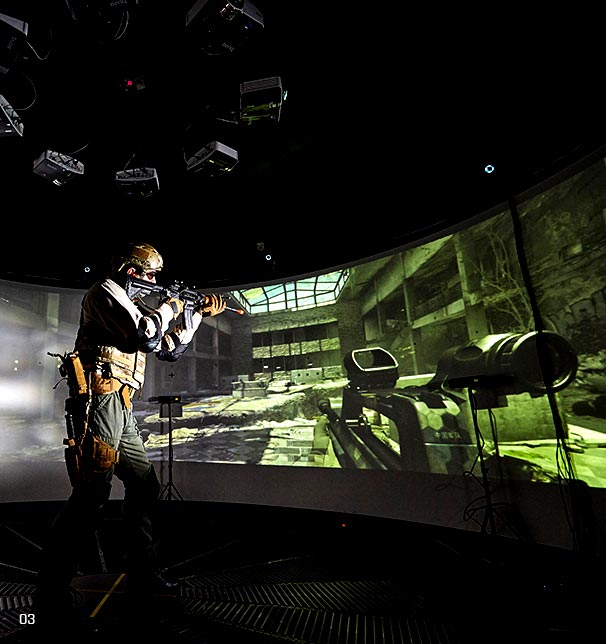
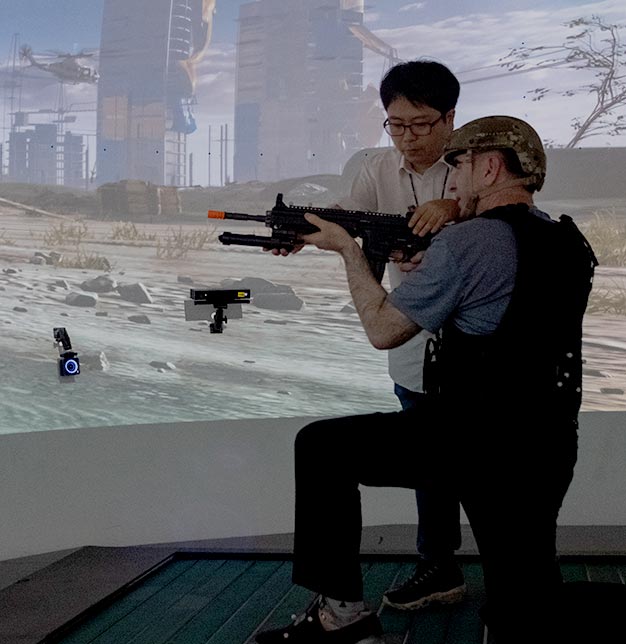
-
VR and other related technologies are also sought by advertising agencies and marketing firms as they can maximize customer experiences with brands and products. For example, 360-degree VR video clips have become one of the most advanced marketing tools, attracting attention from diverse fields including fashion. Consumers can enjoy video clips by controlling them for the full 360 degrees, just as if they were experiencing VR hands-on. As IT conglomerates such as NAVER, Google and Facebook continue to reinforce their 360-degree video services, more and more people will have an opportunity to experience 360-degree advertisements on mobile platforms. Also, small furniture stores or clothes shops will be able to utilize VR to allow customers to have a presentation of the products without having to physically display them on the shop floor. Other than that, potential tourists can travel anywhere in the world with a guide in the VR system, while medical professionals can gain useful experiences and derive penetrating insights from true-to-life virtual models of a human body or operating environments prior to actually performing surgery or providing in-person treatment. It can also be useful for not only medical students, but also physicians who take part in or lead risky operations. VR is used in numerous, diverse applications such as these. Furthermore, VR can eliminate physical boundaries in education as students can be in the same virtual room for a class or discussion. The current VR technology is used mainly in the game and media industries, but it has great potential for integration into diverse fields such as healthcare and retail. In order to realize that potential, however, differentiated markets that are able to apply the VR system must be identified and occupied by preemptively developing the pertinent technologies.
